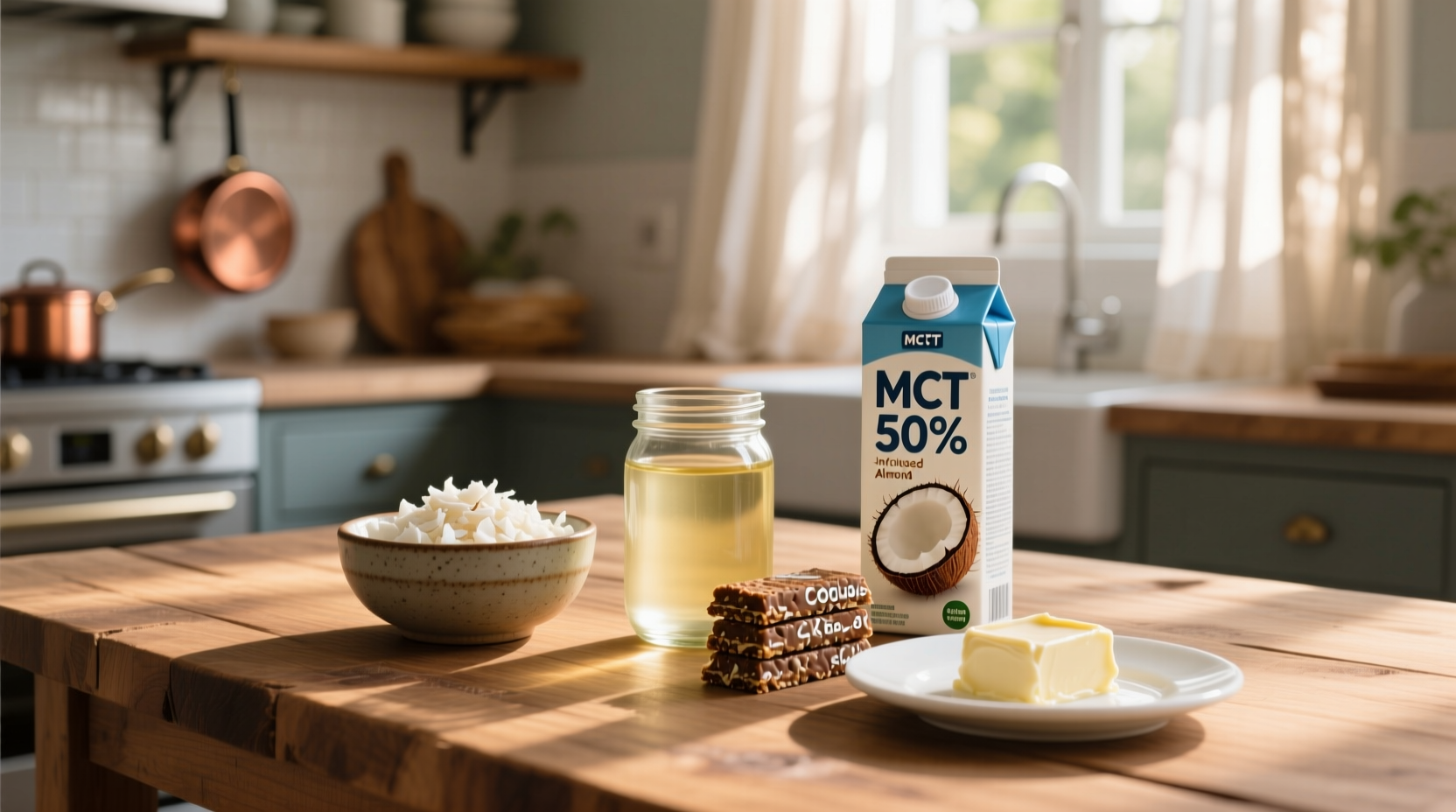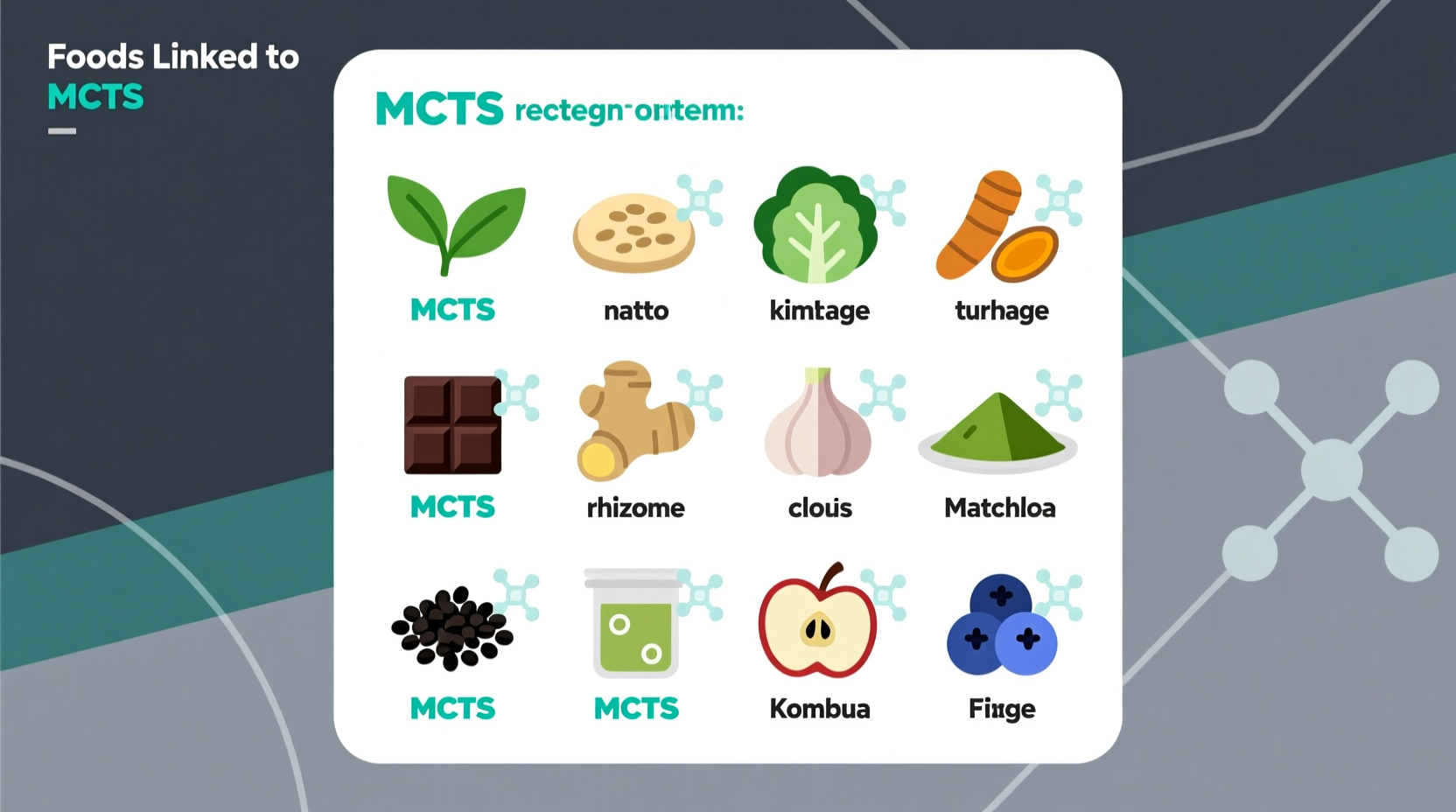If you're searching for natural food sources of medium-chain triglycerides (MCTs), you'll find them primarily in coconut products, palm kernel oil, and certain dairy fats. Coconut oil contains the highest concentration at approximately 60-65% MCTs, followed by palm kernel oil (50-55%), and dairy products like butter and cheese (5-10%). Unlike longer-chain fats, MCTs are rapidly absorbed by your body and converted to energy, making them valuable for ketogenic diets, athletic performance, and cognitive support.
Understanding which foods naturally contain MCTs can transform how you approach nutrition for energy, weight management, and overall wellness. While many people associate MCTs with supplements, several whole foods offer these beneficial fats in their natural form. Let's explore the complete picture of MCT-rich foods and how to incorporate them effectively into your diet.
What Exactly Are MCTs and Why Do They Matter?
Medium-chain triglycerides (MCTs) are a unique type of saturated fat with 6-12 carbon atoms in their molecular structure. Unlike longer-chain triglycerides found in most fats, MCTs bypass normal fat metabolism and go directly to your liver where they're converted into ketones—your body's alternative energy source when carbohydrates are limited.
This distinctive metabolic pathway gives MCTs several advantages:
- Rapid energy conversion without requiring bile salts for digestion
- Increased ketone production for brain and muscle fuel
- Potential appetite regulation effects compared to other fats
- Enhanced thermogenesis (calorie burning) during metabolism
These properties make MCTs particularly valuable for people following ketogenic diets, athletes seeking quick energy, and those managing certain neurological conditions.
Natural Food Sources of MCTs: The Complete Breakdown
While MCT oil supplements have gained popularity, several whole foods contain these beneficial fats naturally. Here's a detailed look at the primary dietary sources:
Coconut: Nature's MCT Powerhouse
Coconut products contain the highest natural concentrations of MCTs among whole foods. The MCT profile in coconut includes primarily lauric acid (C12), with smaller amounts of capric (C10) and caprylic (C8) acids.
| Coconut Product | MCT Content | Primary MCT Types | Practical Serving Size |
|---|---|---|---|
| Coconut oil | 60-65% of total fat | Lauric acid (45-50%), Caprylic (6-10%), Capric (5-8%) | 1-2 tablespoons daily |
| Full-fat coconut milk | 20-25% of total fat | Lauric acid predominant | ½ cup in smoothies or curries |
| Shredded coconut | 15-20% of total fat | Lauric acid predominant | ¼ cup as topping or in baking |
| Coconut cream | 25-30% of total fat | Lauric acid predominant | 2-3 tablespoons in coffee or sauces |
Dairy Products: Traditional MCT Sources
Grass-fed dairy contains smaller but significant amounts of MCTs, primarily in the form of caproic (C6), caprylic (C8), and capric (C10) acids. The MCT content varies based on the animal's diet and the specific dairy product.
Butter and cheese contain the highest concentrations among dairy products, with approximately 5-10% of their total fat content comprising MCTs. Whole milk and full-fat yogurt contain lower percentages but can still contribute to your daily MCT intake when consumed regularly.
Research from the National Institutes of Health indicates that the MCT content in dairy products has remained relatively consistent through traditional farming methods, though modern processing can affect final concentrations.
Palm Kernel Oil: The Second-Richest Source
While less commonly used in Western diets, palm kernel oil contains approximately 50-55% MCTs, making it the second-richest natural source after coconut. It's important to distinguish palm kernel oil (from the seed of the palm fruit) from regular palm oil (from the fruit pulp), which contains significantly fewer MCTs.
When selecting palm kernel oil, look for sustainably sourced options to minimize environmental impact. The Roundtable on Sustainable Palm Oil provides certification for responsibly produced products.
Contextual Considerations: When MCT Foods Deliver Maximum Benefit
Understanding the specific contexts where MCT-rich foods provide the greatest advantage can help you optimize their inclusion in your diet:
- Ketogenic diets: MCTs help maintain ketosis with slightly more carbohydrate flexibility than strict LCT-based (long-chain triglyceride) diets
- Morning energy boost: Adding MCT oil to your morning coffee provides sustained energy without the crash associated with caffeine alone
- Pre-workout nutrition: MCTs convert to energy more rapidly than other fats, making them valuable before endurance activities
- Cognitive support: The ketones produced from MCT metabolism serve as an efficient brain fuel, particularly beneficial for those with cognitive challenges
However, MCTs aren't universally beneficial in all contexts. They provide minimal advantage for individuals following standard high-carbohydrate diets where glucose serves as the primary energy source. Additionally, excessive consumption can cause digestive discomfort in some people, particularly when starting supplementation.
Practical Integration: Adding MCT-Rich Foods to Your Daily Routine
Incorporating MCT-rich foods doesn't require drastic dietary changes. Here are practical, sustainable approaches:
- Replace your morning coffee creamer with 1-2 teaspoons of MCT oil or coconut oil for sustained energy
- Use full-fat coconut milk instead of dairy milk in smoothies and curries
- Add shredded coconut to oatmeal, yogurt, or baked goods for texture and nutrition
- Choose grass-fed butter over margarine for cooking and spreading
- Create salad dressings using coconut oil or palm kernel oil as the base fat

Addressing Common Misconceptions About MCT Foods
Several myths surround MCT-rich foods that deserve clarification:
- Misconception: All coconut products contain the same MCT concentration
Reality: MCT content varies significantly between coconut oil (60-65%), coconut milk (20-25%), and shredded coconut (15-20%) - Misconception: MCTs in food provide identical benefits to purified MCT oil supplements
Reality: Whole food sources contain additional nutrients and fiber that affect absorption and overall nutritional impact - Misconception: More MCTs always equal better results
Reality: Excessive MCT consumption can cause digestive issues; most experts recommend starting with 1-2 tablespoons daily
Scientific Perspective: How MCTs Work Differently
The unique metabolic pathway of MCTs explains their distinctive benefits. According to research published in the Journal of Nutrition and Metabolism, MCTs bypass the typical fat digestion process:
- MCTs travel directly to the liver via the portal vein (unlike longer fats that require lymphatic system transport)
- They're rapidly converted to ketones without requiring carnitine for mitochondrial entry
- This process generates energy more efficiently with less metabolic stress
This metabolic efficiency makes MCT-rich foods particularly valuable for individuals with certain digestive conditions or those seeking immediate energy benefits without gastrointestinal discomfort.
Maximizing Benefits While Minimizing Potential Issues
To get the most from MCT-rich foods while avoiding potential drawbacks:
- Start with small amounts (1 teaspoon) and gradually increase to allow your digestive system to adapt
- Consume MCTs with other foods to minimize potential stomach upset
- Choose unrefined, virgin coconut oil for maximum nutrient retention
- Combine MCT-rich foods with fiber-rich plant foods for balanced digestion
- Monitor your body's response and adjust quantities accordingly
Remember that MCT-rich foods are just one component of a balanced diet. While they offer unique benefits, they shouldn't replace the diversity of fats and nutrients your body needs from various food sources.











 浙公网安备
33010002000092号
浙公网安备
33010002000092号 浙B2-20120091-4
浙B2-20120091-4